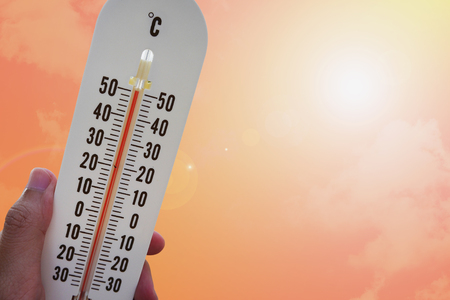Extremely dangerous 55 °C heat index hits Guiuan, Eastern Samar anew

The state weather bureau’s computed heat index data as of 5 p.m. on Tuesday show that the municipality’s heat index hit a sizzling 55 °C.
Last May 26 and 27, the heat index in Guiuan peaked at 55 °C and 54 °C, respectively.
Pagasa said that exposure to heat indices of 52 °C and beyond may likely cause heat stroke.
Meanwhile, heat indices under the “danger” category (42°C – 51°C)were also logged in the following areas:
48 °C
Article continues after this advertisement- Sangley Point, Cavite
- Virac, Catanduanes
46 °C
Article continues after this advertisement- Butuan City, Agusan del Norte
45 °C
- Catarman, Northern Samar
44 °C
- Ninoy Aquino International Airport, Pasay City
- Laoag City, Ilocos Norte
- Dagupan City, Pangasinan
- ISU in Echague, Isabela
- Casiguran, Aurora
- Puerto Princesa City, Palawan
- Cuyo, Palawan
- Tacloban City, Leyte
43 °C
- Science Garden, Quezon City
- Aparri, Cagayan
- Baler, Aurora
- Infanta, Quezon
- Alabat, Quezon
- Masbate City, Masbate
- CBSUA in Pili, Camarines Sur
- Catbalogan, Samar
- Dipolog, Zamboanga del Norte
42 °C
- Sinait, Ilocos Sur
- MMSU in Batac, Ilocos Norte
- Calayan, Cagayan
- Tuguegarao City, Cagayan
- Ambulong in Tanauan, Batangas
- Calapan, Oriental Mindoro
- Romblon, Romblon
- Daet, Camarines Norte
- Legazpi City, Albay
- Juban, Sorsogon
- Roxas City, Capiz
- Iloilo City, Iloilo
- Panglao International Airport, Bohol
- Mactan International Airport, Cebu
- Siquijor, Siquijor
- Borongan, Eastern Samar
- Maasin, Southern Leyte
READ: Pagasa lifts Signal No.1 as Typhoon Aghon moves away from PH
According to Pagasa, the heat index is “a measure of the contribution that high humidity makes with abnormally high temperatures in reducing the body’s ability to cool itself.”
Heat indices ranging from 42°C to 51°C fall under the “danger” category, and people exposed to these heat indices are prone to heat cramps, exhaustion, and even heat stroke with drawn-out exposure.
To prevent the effects of intense heat, the state weather bureau said the public must limit time spent outdoors; drink plenty of water; avoid tea, coffee, soda, and liquor; use umbrellas, hats, and wear sleeved clothing outdoors; and schedule strenuous activities on the cooler periods of the day.
It also noted that symptoms of heat-related illnesses include heavy sweating, exhaustion or fatigue, dizziness or lightheadedness, passing out or feeling dizzy when standing, a weak but rapid pulse, nausea, and vomiting.
In cases of emergency, Pagasa advised the public to do the following:
- Move the person to a shaded area and lie him or her down with legs elevated.
- If conscious, have the person sip cool water.
- Remove extra layers of clothing.
- Apply cool water to the skin and provide ventilation.
- Apply ice packs to the armpits, wrists, ankles, and groin.
- If the person’s condition worsens, bring him or her to hospital immediately.